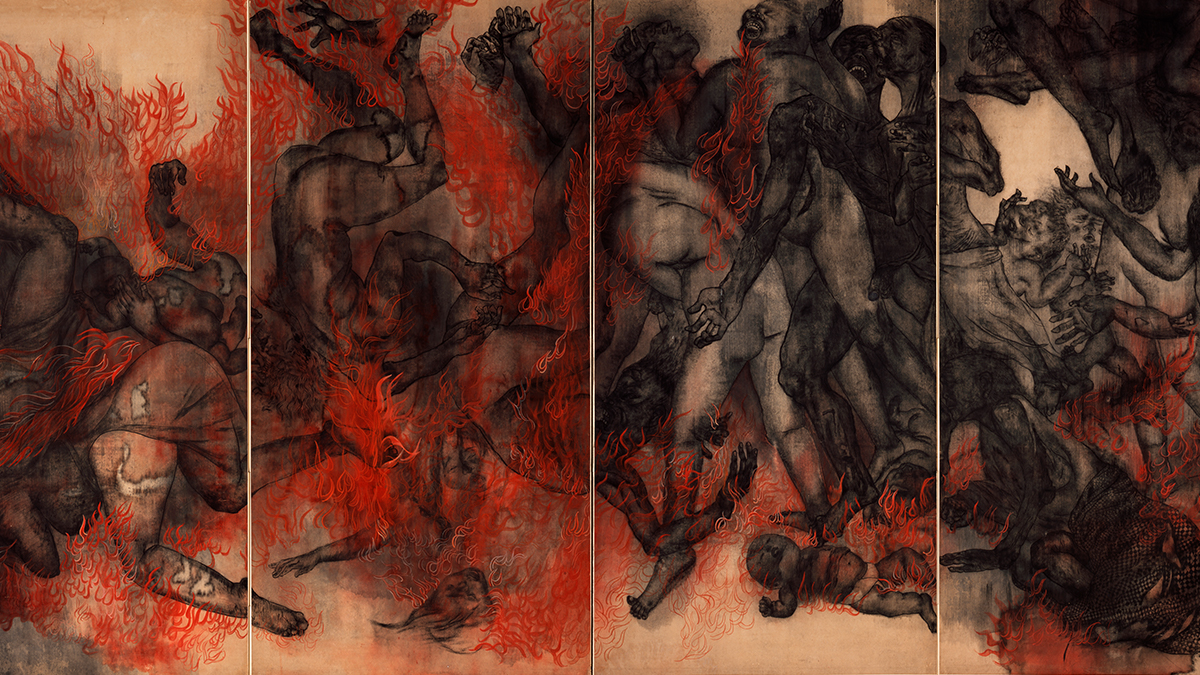The Hiroshima Panels by Iri and Toshi Maruki were the earliest artworks to portray human suffering in the wake of the atomic bomb.
Japanese artists Iri and Toshi Maruki wanted the world to see what had happened in Hiroshima. Buildings aflame, corpses scorched like kindling, the air dense with flies and smoke. Horrors the couple couldn’t comprehend—only paint, first as three collaborative murals, then two more, and so on as their commitment to sharing eyewitness accounts grew. Known simply as The Hiroshima Panels, these tableaux were the earliest artworks to portray human suffering in the wake of the world’s first-ever deployed atomic bomb—a weapon thought to have killed an estimated 140,000 Japanese both on and after August 6, 1945.
The U.S. government suppressed details of the blast in Hiroshima, as well as that in Nagasaki three days later. That continued in occupied Japan, where the press was under American control. But unlike many in Japan, the Marukis—husband-and-wife pacifists—had witnessed the nuclear fallout for themselves while rushing to Hiroshima to aid relatives days after the blast. As Iri Maruki shared in a 1986 documentary about their work, Hellfire: A Journey from Hiroshima, the streets were thick with “the stench of death.” “Many people died without knowing what had happened,” he remembered. “They must have thought the earth had split open.”
Fearing collective amnesia, the Marukis began painting reimaginings of their experiences, and by 1950 the duo had completed a trio of multi-segment works. Fire (shown on these pages) shows a conflagration swallowing throngs of civilians; its siblings, Ghosts and Water, follow victims as they stagger through the streets and seek refuge in a river. For many Japanese, these renderings of Hiroshima’s dead and dying were the first depictions of what had occurred on that fateful day.
The Marukis continued the theme after Allied occupation ended in 1952. Their growing body of work raised awareness of the cataclysm in Japan and abroad—but it also elicited criticism from wartime victims of the Japanese. These exchanges prompted a new commitment from the artists to depict war itself—not just nuclear warfare—as the world’s ultimate scourge. By the time the duo unveiled the 15th and final Hiroshima Panel in 1982, the Marukis had gone on to paint many other historic horrors—including ones committed by Japan. ✯







